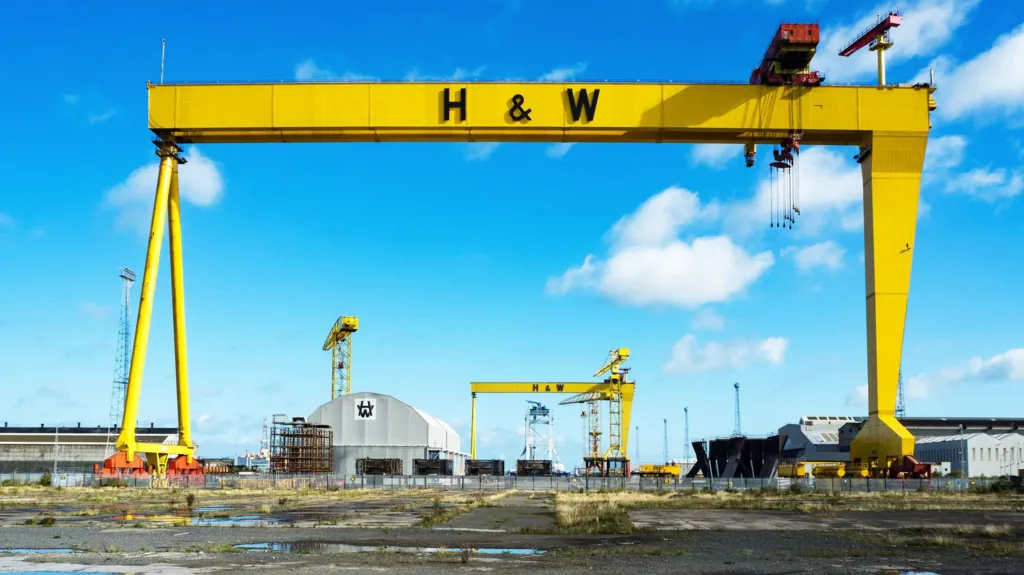Harland and Wolff Enters Administration: A Historic Shipbuilder’s New Challenges
3 min read

Harland and Wolff, the iconic Belfast shipbuilder renowned for constructing the Titanic, has entered administration for the second time in five years. This decision follows last week’s warning from the company’s board that such a move was unavoidable due to ongoing financial difficulties.
The administration process affects only the holding company, Harland & Wolff Group Holdings plc, while the operational arms responsible for the shipyards continue to function. The primary yard remains in Belfast, with additional facilities in Appledore, England, and Methil and Arnish in Scotland.
In light of the administration, the company’s executive chairman, Russell Downs, remains hopeful that new ownership can be secured for the operational yards. Teneo Financial Advisory’s Gavin Park and Matt Cowlishaw have been appointed as joint administrators. The holding company currently employs 59 people, and the administrators have indicated that staffing levels will be reduced shortly after their appointment.
In a statement, Harland and Wolff noted, “The Administrators will unfortunately be required to reduce the headcount upon appointment. A number of employees will be retained to provide certain required services to the operational companies under a transitional services agreement with the Administrators.” Furthermore, shareholders should brace for a total loss of investment value as a consequence of this administration.
Founded in 1861 by Yorkshireman Edward Harland and German partner Gustav Wolff, Harland and Wolff quickly rose to prominence in the shipbuilding industry. By the early 20th century, the company was a dominant force, leading global shipbuilding and becoming the largest builder of ocean liners worldwide.
However, the company’s fortunes began to wane in recent years. After falling into administration in 2019, Harland and Wolff was acquired by Infrastrata, a small London-based energy firm lacking substantial marine engineering experience. Infrastrata subsequently rebranded as Harland and Wolff and managed to secure a major contract with the Royal Navy in 2022 as part of a consortium led by Navantia, Spain’s state-owned shipbuilder.
Despite these initial successes, the company faced mounting financial losses as it attempted to scale operations. The 2021 financial report, covering a 17-month period, revealed losses exceeding £25 million. The audited annual accounts for 2022 reported a turnover of £28 million but showed a staggering loss of approximately £70 million. Auditors flagged a “material uncertainty” regarding the firm’s ability to continue as a going concern. Further exacerbating the situation, unaudited accounts for 2023 indicated an additional loss of £43 million.
The company has become increasingly reliant on high-interest loans from a specialist U.S. lender, Riverstone. Harland and Wolff was also banking on obtaining a government loan guarantee to facilitate refinancing with more traditional lenders. However, the new government recently announced it would not provide support, citing a “very substantial risk that taxpayer money would be lost.”
In response to these challenges, Russell Downs, a restructuring expert, was brought in as executive chairman. He initiated a strategic review of the business alongside advisors from Rothschild bank, seeking to identify pathways for recovery and stability.
The administration of Harland and Wolff marks a significant chapter in the history of a company that has been at the forefront of shipbuilding for over a century. While there are efforts underway to secure new ownership and stabilize operations, the path ahead remains uncertain. As the iconic shipbuilder navigates this turbulent period, the legacy of the Titanic and its historic shipyard stands as a reminder of the highs and lows inherent in the world of maritime industry. The coming weeks will be critical in determining the future of Harland and Wolff and its storied shipbuilding heritage.